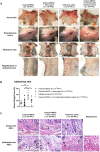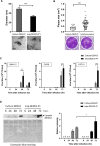Infecting mosquitoes alters DENV-2 characteristics and enhances hemorrhage-induction potential in Stat1-/- mice
- PMID: 34449772
- PMCID: PMC8428656
- DOI: 10.1371/journal.pntd.0009728
Infecting mosquitoes alters DENV-2 characteristics and enhances hemorrhage-induction potential in Stat1-/- mice
Abstract
Dengue is one of the most prevalent arthropod-borne viral diseases in humans. There is still no effective vaccine or treatment to date. Previous studies showed that mosquito-derived factors present in saliva or salivary gland extract (SGE) contribute to the pathogenesis of dengue. In this study, we aimed to investigate the interplay between mosquito vector and DENV and to address the question of whether the mosquito vector alters the virus that leads to consequential disease manifestations in the mammalian host. DENV2 cultured in C6/36 cell line (culture-DENV2) was injected to Aedes aegypti intrathoracically. Saliva was collected from infected mosquitoes 7 days later. Exploiting the sensitivity of Stat1-/- mice to low dose of DENV2 delivered intradermally, we showed that DENV2 collected in infected mosquito saliva (msq-DENV2) induced more severe hemorrhage in mice than their culture counterpart. Msq-DENV2 was characterized by smaller particle size, larger plaque size and more rapid growth in mosquito as well as mammalian cell lines compared to culture-DENV2. In addition, msq-DENV2 was more efficient than culture-DENV2 in inducing Tnf mRNA production by mouse macrophage. Together, our results point to the possibility that the mosquito vector provides an environment that alters DENV2 by changing its growth characteristics as well as its potential to cause disease.
Conflict of interest statement
The authors have declared that no competing interests exist.
Figures





References
-
- Pinheiro FP, Corber SJ. Global situation of dengue and dengue haemorrhagic fever, and its emergence in the Americas. World health statistics quarterly Rapport trimestriel de statistiques sanitaires mondiales. 1997;50(3–4):161–9. - PubMed
Publication types
MeSH terms
Substances
LinkOut - more resources
Full Text Sources
Research Materials
Miscellaneous

